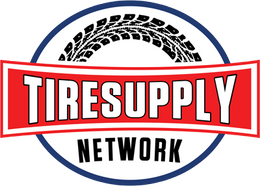Have you ever wondered how to repair a tire? Have you asked yourself what is tire bead sealer? Have you ever wondered what is rubber prep buffing solution? Have you ever wondered where to buy tire repair products?
Well, Amy with Tire Supply Network is here to answer those questions! She's here to not only show you the step by step procedure, but also explain other common questions you may have when performing a tire repair. Furthermore, we will introduce you to all of the products necessary to perform this repair, all of which are available here on our website!
The first and most important step is to determine whether or not a repair is possible. A tire MUST be thoroughly inspected before a repair is started.
Next, determine the angle of the injury by using a patch plug gauge. In the video above, the injury is less than 25 degrees, so we will use a combination repair unit (13-673). Our Xtra Seal repair units come with a patch plug gauge included on the box!
Next, clean the inner liner of the tire with rubber prep pre-buff buffing solution (14-100). Splash the solution around the injury and use a scraper (14-315H) to get rid of all the contaminants. Remember, a properly cleaned inner liner is essential for a proper tire repair.
Use a Paintstik marker (WPS) or tire crayon to outline the area approximately ½ inch around the injury.
Using a low speed buffer (CP-873K) & carbide cutter (CC6), drill the injury three times from the inside of the tire and three times from the outside of the tire. This step removes all of the damaged cords inside the tire and stabilizes the area around the injury. Additional passes with the drill and cutter may be necessary.
Buff the inner liner with a buffing wheel (14-359). A properly buffed inner liner is rid of mold marks, thereby creating a smooth platform for the repair unit.
A properly buffed surface is smooth with none of the steel cords visible.
Don’t forget to clean the buffed surface and remove any excess rubber dust with a fine brass brush (14-301A) so that no contaminants are put into the buffed inner liner.
Make sure to vacuum (795) remaining rubber dust from the inside of the tire being careful not to touch the buffed surface. This removes any steel shavings or rubber dust.
Apply vulcanizing cement (14-008) to the injury with an awl. Brush a thin even coat of vulcanizing cement to the buffed surface in small circular motions and then leave to dry.
After you’ve allowed the cement to dry completely, insert the lead wire stem with a small amount of rubber cement into the prepared injury channel. Pull the stem from the outside using pliers until the cushion gum is visible on the outside of the tire.
Next, stitch (14-314) the repair unit, working from the center towards the outside, ensuring there is no air under the repair unit.
Remove the plastic backing of the patch with an awl (14-310A) to get prepared to apply the inner liner sealer.
Apply inner liner sealer (14-128A) to the buffed areas, around the patch. Inner liner sealer ensures an airtight seal between the newly buffed surface of the inner liner and the patch.
Trim the stem on the outside of the tire with a flexible knife (14-305). Make sure not to pull on the rubber stem. The tire is now good to go.
There you have it! The proper procedure to repair a tire and all the necessary tools! If you have any questions or comments, please don't hesitate to reach out. All of the tire repair materials in this video can be purchased today!


